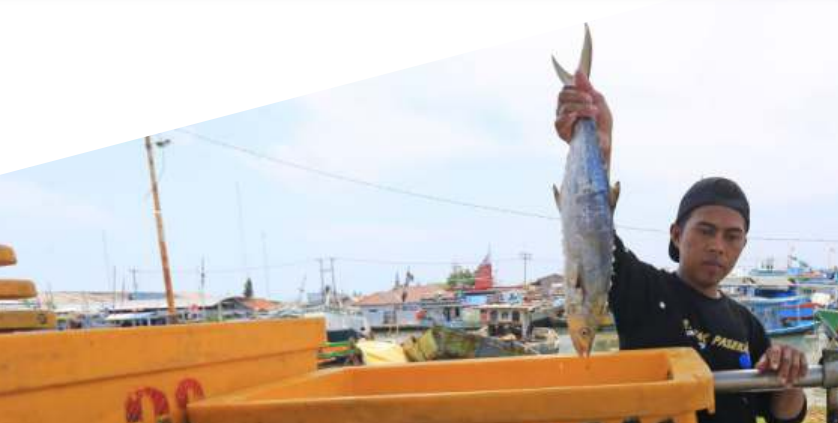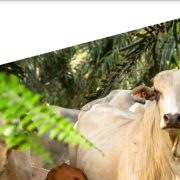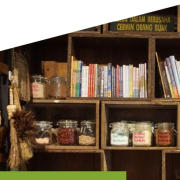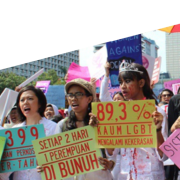Empowering Indonesia’s Fisheries Industry through “Blue Food” Initiatives to Combat Food Crisis
Current instability of the international situation, such as increasing tensions between the US and China, war between Ukraine and Russia, climate change, and global economic uncertainty has caused a food crisis internationally. As the fourth largest nation, with more than 280 million people, Jakarta has cautious concern over this issue. For instance, President Joko Widodo has repeatedly given speeches regarding the food crisis and is currently intensifying government attention through the rice aid program (Metriani, 2024). Responding to the concern over the food crisis, Indonesia has started to implement food estate projects in various locations to ensure the stability of the national food supply and national nutritional needs. However, several issues and critics also occur with the implementation of this project, such as environmental concerns due to deforestation and biodiversity losses (Napitupulu et al., 2021).
In responding to the need for food security, Indonesia’s government should implement policies to maximize the potential of Indonesia without detrimental impacts towards the environment. One strategy that can be implemented is maximizing the food production from maritime sources.
With its reputation as an archipelagic nation, Indonesia is crucial in the global blue food supply chain, ranking third as the largest fish-producing country worldwide, yielding approximately 6 million tons annually (Cao et al., 2023). However, Indonesia is currently failing to maximize this potential to supply food.
Nowadays, coastal communities represent a third of the global poor population. In Indonesia, for example, the percentage of people living below the poverty line in coastal areas is 11.02 percent, while in non-coastal areas, it is 8.67 percent (Alfiyah, 2023). Regarding the food crisis and nutrient fulfillment, this phenomenon contributes to a staggering prevalence of stunting, reaching 30.8 percent in Indonesia, surpassing the global average of 22.2 percent (Yuliantini et al., 2022). The majority of them work as Small-Scale Fishers (SSF), facing significant struggles in their livelihoods (Arnold, 2020).
In answering this issue, the implementation of blue food is pivotal. According to (Naylor et al., 2021) blue food is defined as aquatic foods captured or cultivated in marine and freshwater systems, to meet rising population- and income-driven demand. Not merely responding to the national food crisis problem, integrating blue food into the national food system is also an absolute win in resolving environmental issues. Moreover, it could help overcome the economic deprivation along Indonesia’s coastal communities in the future.
In line with overcoming the food and nutrient crisis, blue foods are a cornerstone of good nutrition and health. Many of them are rich in bioavailable micronutrients that help prevent maternal and infant mortality, stunting, and cognitive deficits. Blue foods can also be a healthier animal-source protein than terrestrial livestock: they are rich in healthy fats and can help reduce obesity and non-communicable diseases (Golden et al., 2021; Thilsted et al., 2016).
Indonesia’s fisheries sector, including capture fisheries and aquaculture, is a major contributor to the economy, providing around USD 27 billion and seven million jobs (Bhwana, 2023). Indonesia has the world’s second-largest fishery sector, with over 50% of the country’s animal-based protein needs met by marine resources (Ryckman et al., 2021). Moreover, The World Bank estimates the value of Indonesia’s blue economy at USD 1.338 billion, which includes opportunities for revenue through coastal culture, capture fishery, treasure-laden shipwrecks, marine tourism, coral reefs, seagrass, and mangroves (Boediono, 2020). These economic trajectories are promising for small-scale fishers to make their life.
Blue foods also generally have lower emissions and impacts on land and water than many terrestrial meats. By promoting the consumption of blue foods, the environmental footprint of the food system can be reduced, contributing to climate change mitigation (Crona et al., 2023). By leveraging the benefits of blue foods, such as their climate resilience, reduced environmental impact, and contribution to biodiversity conservation, countries like Indonesia can make significant strides in addressing climate change while ensuring food security and sustainable economic development.
However, unleashing the power of blue foods in Indonesia is not as easy as it looks. Several issues should be addressed immediately. First, to enhance the economic gains from the fisheries industry, connectivity challenges to the blue food implementation in Indonesia should be resolved. Although there is a lack of available data regarding the geographical isolation of SSF, Indonesia’s condition as an archipelagic nation adequately reflects such circumstances. As most coastal communities live in isolated areas, the supply chain flow becomes obstructed and not economically profitable for SSF. Geographical constraints and infrastructure limitations lead to rapid spoilage of fish catches, resulting in products that do not meet buyer expectations (Oktaviani, 2018). Therefore, infrastructure establishment is an instrument that the government has to provide, such as roads and fuel subsidies, through economic incentives for small-scale fishers.
The government needs to ensure there is an integration of the supply chain for SSF and fisheries businesses. In addition, Parsons (1940) claims that economic incentives such as financial rewards can significantly influence people’s actions and behavior. This situation poses a significant challenge for SSF. Despite nearly 96% of fishing vessels in Indonesia being under ten gross tons, only 20% of the country’s fish catches come from SSF (Napitupulu & Tanaya, 2023). Additionally, the production costs incurred by SSF exceed their income. Consequently, the number of SSF is decreasing, from 2.16 million fishermen in 2010 to 1.83 million in 2019 (Cohen et al., 2019). Even if blue foods have been integrated into SSF activities, economic gains would be promising linkages between small-scale fishers and the government’s blue economy initiatives.
For instance, in Angola, government involvement in protecting and recognizing SSF constitutes a crucial initiative in the process of empowering SSF. The Angolan government integrates SSF production with efforts to reduce hunger and poverty by ensuring food security. These efforts entail improving infrastructure, establishing microcredit mechanisms, increasing the number of vessels, and ensuring the existence of a blue food supply chain through various connections. Ultimately, these endeavors not only yield food security but also generate market multiplications for blue food while enhancing sales, particularly for hotel and restaurant supplies in major cities (March & Failler, 2022).
Secondly, to capitalize on the potential of maritime resources for food security, integrating blue food into the national food system is essential. SSF and fisheries businesses must be included in this program and should be fully supported by the government. As the Blue Economy Roadmap has integrated blue food, particularly in Phase II (2025-2029), the implementation should be carried out comprehensively. Current implementation of fisheries policies still fails to address the economic interest of SSF, as more than 11% of people in the fisheries industry are still classified as poor, this figure is higher than other sectors (Anna, 2020). Furthermore, there is an urgent need for regulations regarding the large fishing vessel should also be implemented to protect the SSF, as the existing implementations are still inadequate to protect the SSF’s interest.
Arguably, the implementation of this vision should address the economic interest of SSF and fisheries businesses. Government should ensure the inclusivity and active participation from SSF and fisheries businesses. For instance, the Indonesian government should not only focus on subsidizing SSF, but also support technicalities of SSF such as increasing their market power and marketing of their products as implemented in Japan. (Delaney & Yagi, 2017)
In conclusion, the vision of developing the blue food sector faces some challenges that need to be addressed comprehensively. With its complex interplay between ecological, economic, and societal factors in the fisheries sector, Indonesia’s efforts to overcome these hurdles should prioritize innovation, cooperation, and sustainable practices. Furthermore, the government should ensure that inclusivity and economic gains for small-fisher and fisheries businesses are implemented to achieve Sustainable Development Goals 14
References
Arnold, R. (2020, September 29). Towards zero food waste in Indonesia’s fishing communities. IFAD. https://www.ifad.org/en/web/latest/-/story/towards-zero-food-waste-in-indonesia-s-fishing-communities?p_l_back_url=%2Fen%2Fweb%2Flatest%3Fstent%3D12%26start%3D7
Alfiyah, N. (2023, September 12). Coastal communities amidst poverty, mining, and global warming. EcoNusa. https://econusa.id/en/ecoblogs/coastal-community/
Anna, Z. (2020, June 9). Fishers are one of the poorest professions in Indonesia, yet they are one of the happiest. The Conversation. http://theconversation.com/fishers-are-one-of-the-poorest-professions-in-indonesia-yet-they-are-one-of-the-happiest-139872
Boediono, L. (2020, October 29). New initiative to improve sustainability of indonesia’s fisheries. World Bank Group. https://www.worldbank.org/en/news/press-release/2020/10/30/new-initiative-to-improve-sustainability-of-indonesia-fisheries
Cao, L., Halpern, B. S., Troell, M., Short, R., Zeng, C., Jiang, Z., Liu, Y., Zou, C., Liu, C., Liu, S., Liu, X., Cheung, W. W. L., Cottrell, R. S., DeClerck, F., Gelcich, S., Gephart, J. A., Godo-Solo, D., Kaull, J. I., Micheli, F., … Tigchelaar, M. (2023). Vulnerability of blue foods to human-induced environmental change. Nature Sustainability, 6(10), 1186–1198. https://doi.org/10.1038/s41893-023-01156-y
Cohen, P. J., Allison, E. H., Andrew, N. L., Cinner, J., Evans, L. S., Fabinyi, M., Garces, L. R., Hall, S. J., Hicks, C. C., Hughes, T. P., Jentoft, S., Mills, D. J., Masu, R., Mbaru, E. K., & Ratner, B. D. (2019). Securing a just space for small-scale fisheries in the blue economy. Frontiers in Marine Science, 6. https://doi.org/10.3389/fmars.2019.00171
Crona, B. I., Wassénius, E., Jonell, M., Koehn, J. Z., Short, R., Tigchelaar, M., Daw, T. M., Golden, C. D., Gephart, J. A., Allison, E. H., Bush, S. R., Cao, L., Cheung, W. W. L., DeClerck, F., Fanzo, J., Gelcich, S., Kishore, A., Halpern, B. S., Hicks, C. C., … Wabnitz, C. C. C. (2023). Four ways blue foods can help achieve food system ambitions across nations. Nature, 616(7955), 104–112. https://doi.org/10.1038/s41586-023-05737-x
Delaney, A., & Yagi, N. (2017). Implementing the Small-Scale Fisheries Guidelines: Lessons from Japan (pp. 313–332). https://doi.org/10.1007/978-3-319-55074-9_15
Diana, R., Rachmayanti, R. D., Khomsan, A., & Riyadi, H. (2022). Influence of eating concept on eating behavior and stunting in Indonesian Madurese ethnic group. Journal of Ethnic Foods, 9(1). https://doi.org/10.1186/s42779-022-00162-3
Golden, C. D., Koehn, J. Z., Shepon, A., Passarelli, S., Free, C. M., Viana, D. F., & Thilsted, S. H. (2021). Aquatic foods to nourish nations. Nature, 598(7880), 315-320.
Iriani, Yahya, Suryaningsi, T., Sritimuryati , Mardiana , & Irmawan. (2023). Socio-cultural Determinants of Stunning in Coastal Areas in Indonesia: A Report of an Ethnographic Study. International Journal of Community Based, 11(4), 287–288.
March, A., & Failler, P. (2022). Small-scale fisheries development in Africa: Lessons learned and best practices for enhancing food security and livelihoods. Marine Policy, 136, 104925. https://doi.org/10.1016/j.marpol.2021.104925
Metriani, Y. (2024, February 16). Jokowi Contemplates Extending Rice Aid Beyond April Due to Rising Prices. Jakarta Globe. https://jakartaglobe.id/business/jokowi-contemplates-extending-rice-aid-beyond-april-due-to-rising-prices
Napitupulu, L. (2022, January 5). 3 Ways How Fisheries are Essential for a Resilient Food System during Pandemic and Beyond. WRI Indonesia. https://wri-indonesia.org/en/insights/3-ways-how-fisheries-are-essential-resilient-food-system-during-pandemic-and-beyond
Napitupulu, L., & Tanaya, S. (2023). Better care for locals and the ocean to make Indonesia’s blue economy more viable – Academia. The Jakarta Post. https://www.thejakartapost.com/opinion/2023/07/11/better-care-for-locals-and-the-ocean-to-make-indonesias-blue-economy-more-viable.html
Naylor, R. L., Kishore, A., Sumaila, U. R., Issifu, I., Hunter, B. P., Belton, B., Bush, S. R., Cao, L., Gelcich, S., Gephart, J. A., Golden, C. D., Jonell, M., Koehn, J. Z., Little, D. C., Thilsted, S. H., Tigchelaar, M., & Crona, B. (2021). Blue food demand across geographic and temporal scales. Nature Communications, 12(1), Article 1. https://doi.org/10.1038/s41467-021-25516-4
Nurhayati, N., Tsani Hutasuhut, K. Z., Rahmi, F., Anggraini Siregar, W., Saraan, A., & Sa’diyah Dalimunthe, H. (2023). Factors causing stunting in toddlers aged 0 to 5 years in coastal communities. Enrichment: Journal of Multidisciplinary Research and Development, 1(4), 135–139. https://doi.org/10.55324/enrichment.v1i4.27
Oktaviani, R., & Erniwidodo. (2018). WTO. Managing the Challenges of WTO Participation: Case Study. https://www.wto.org/english/res_e/booksp_e/casestudies_e/case18_e.htm
Parsons, T. (1940). The Motivation of Economic Activities. The Canadian Journal of Economics and Political Science / Revue Canadienne d’Economique et de Science Politique, 6(2), 187–202. https://doi.org/10.2307/137203
Ramenzoni, V. C. (2023). Taboos, food avoidances, and diseases: Local epistemologies of health among Coastal Endenese in Eastern Indonesia. Frontiers in Sustainable Food Systems, 7. https://doi.org/10.3389/fsufs.2023.977694
Roberts, N., Mengge, B., Oaks, B., Sari, N., Irsan, & Humphries, A. (2022). Fish consumption pathways and food security in an Indonesian fishing community. Food Security, 15(1), 1–19. https://doi.org/10.1007/s12571-022-01323-7
Thilsted, S. H., Thorne-Lyman, A., Webb, P., Bogard, J. R., Subasinghe, R., Phillips, M. J., & Allison, E. H. (2016). Sustaining healthy diets: The role of capture fisheries and aquaculture for improving nutrition in the post-2015 era. Food Policy, 61, 126-131.
Torlesse, H., Cronin, A. A., Sebayang, S. K., & Nandy, R. (2016). Determinants of stunting in Indonesian children: Evidence from a cross-sectional survey indicate a prominent role for the water, sanitation and hygiene sector in stunting reduction. BMC Public Health, 16(1). https://doi.org/10.1186/s12889-016-3339-8
Yuliantini, E., Sukiyono, K., Yuliarso, M. Z., & Sulistyo, B. (2022). Food security and stunting incidences in the coastal areas of Indonesia. Open Access Macedonian Journal of Medical Sciences, 10(F), 454–461. https://doi.org/10.3889/oamjms.2022.9335
.










Leave a Reply
Want to join the discussion?Feel free to contribute!